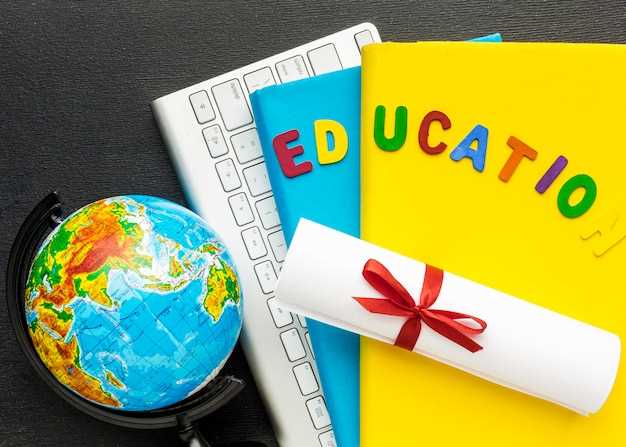
In the vibrant nation of Haiti, a land steeped in history and resilience, lies a profound need for transformative education. This Caribbean country, known for its vibrant culture and breathtaking landscapes, faces a myriad of obstacles in its quest to provide accessible and high-quality learning opportunities to its citizens. However, amidst these challenges, there is a growing determination to overcome barriers and create a brighter future for the youth of Haiti.
With a rich tapestry of traditions and a deep-rooted passion for knowledge, Haiti’s educational landscape is a complex mosaic of triumphs and tribulations. The nation’s commitment to fostering intellectual growth and empowering its citizens is evident, as it strives to bridge the gap between educational disparities and ensure equal access to quality learning for all. Through innovative approaches and collaborative efforts, Haiti is embarking on a transformative journey to enhance its educational system and unlock the untapped potential of its young minds.
At the heart of this educational revolution lies the recognition that education is not merely a means to acquire knowledge, but a powerful catalyst for social change and economic development. By equipping individuals with the necessary skills and knowledge, Haiti aims to break the cycle of poverty, empower marginalized communities, and foster a sense of unity and national pride. Through education, Haiti seeks to unleash the boundless potential of its people, nurturing a generation of leaders who will shape the destiny of the nation.
The State of Education in Haiti: Current Challenges and Issues
In Haiti, the current state of education presents a myriad of challenges and issues that hinder the progress and development of the nation’s learning system. These obstacles, which encompass a range of difficulties, pose significant barriers to the provision of quality education and the enhancement of access to learning opportunities for all Haitian citizens.
1. Limited Infrastructure and Resources
One of the primary challenges facing education in Haiti is the scarcity of adequate infrastructure and resources. Many schools lack proper facilities, such as classrooms, libraries, and laboratories, making it difficult for students to engage in effective learning. Additionally, the shortage of educational materials, including textbooks and technology, further hampers the quality of education provided.
2. Socioeconomic Disparities
Socioeconomic disparities play a significant role in exacerbating the challenges faced by education in Haiti. The majority of the population lives in poverty, making it challenging for families to afford the costs associated with education, such as school fees, uniforms, and supplies. As a result, many children are unable to attend school, perpetuating the cycle of poverty and limiting their access to high-quality learning opportunities.
Furthermore, the socioeconomic disparities also contribute to the unequal distribution of educational resources across the country. Rural areas, in particular, suffer from a lack of schools and qualified teachers, making it difficult for students in these regions to receive a quality education.
In conclusion, the state of education in Haiti is marked by numerous challenges and issues that impede the progress and accessibility of quality learning. The limited infrastructure and resources, coupled with socioeconomic disparities, create significant barriers for students in their pursuit of education. Addressing these challenges and finding sustainable solutions is crucial for overcoming the current issues and ensuring a brighter future for education in Haiti.
Addressing Infrastructure and Resource Gaps in Haitian Schools

In the context of education in Haiti, it is crucial to address the existing gaps in infrastructure and resources within the school system. By focusing on improving the physical facilities and providing necessary educational materials, Haiti can enhance the learning environment and promote better educational outcomes for its students.
One of the key challenges faced by Haitian schools is the lack of adequate infrastructure. Many schools in Haiti suffer from dilapidated buildings, overcrowded classrooms, and insufficient facilities such as libraries, laboratories, and playgrounds. These infrastructure gaps hinder the overall learning experience and limit the opportunities for students to explore and engage in hands-on learning activities.
Furthermore, the scarcity of resources in Haitian schools poses a significant obstacle to quality education. Limited access to textbooks, teaching materials, and technology inhibits the ability of teachers to deliver effective lessons and engage students in interactive learning. Without the necessary resources, students are often unable to fully grasp and apply the concepts being taught, hindering their academic progress.
To address these infrastructure and resource gaps, it is essential for the Haitian government and relevant stakeholders to prioritize investments in school infrastructure development. This includes renovating existing buildings, constructing new classrooms, and equipping schools with essential facilities such as libraries, laboratories, and computer rooms. Additionally, efforts should be made to ensure the availability of up-to-date textbooks, teaching materials, and technological resources to support effective teaching and learning.
A comprehensive approach is required to address the infrastructure and resource gaps in Haitian schools. Collaboration between the government, non-governmental organizations, and international partners is crucial to mobilize the necessary funding and expertise. By investing in the improvement of school infrastructure and providing adequate resources, Haiti can create a conducive learning environment that empowers students and enhances their educational opportunities.
| Benefits of Addressing Infrastructure and Resource Gaps |
|---|
| Improved learning environment |
| Enhanced student engagement |
| Increased academic achievement |
| Opportunities for hands-on learning |
| Equitable access to quality education |
Improving Teacher Training and Professional Development Programs
In the pursuit of enhancing the quality of education in Haiti and addressing the unique challenges faced by the education system, it is crucial to focus on improving teacher training and professional development programs. By investing in the continuous growth and development of teachers, we can ensure that they are equipped with the necessary skills and knowledge to provide high-quality learning experiences to students.
Enhancing Pedagogical Techniques
One key aspect of improving teacher training programs is to focus on enhancing pedagogical techniques. This involves providing teachers with training on innovative teaching methods, such as active learning, project-based learning, and differentiated instruction. By equipping teachers with a diverse range of pedagogical approaches, they can cater to the individual needs and learning styles of their students, fostering a more inclusive and engaging learning environment.
Strengthening Subject Knowledge
Another important aspect of teacher training and professional development is strengthening subject knowledge. Teachers should have a deep understanding of the subjects they teach, enabling them to effectively convey complex concepts and facilitate meaningful discussions in the classroom. By providing opportunities for teachers to enhance their subject knowledge through workshops, seminars, and collaborative learning experiences, we can ensure that students receive accurate and comprehensive education in various disciplines.
| Benefits of Improved Teacher Training |
|---|
| 1. Enhanced student engagement and motivation |
| 2. Improved academic performance |
| 3. Increased teacher confidence and job satisfaction |
| 4. Better classroom management and discipline |
| 5. Higher retention rates of both students and teachers |
By investing in improving teacher training and professional development programs, Haiti can overcome the challenges it faces in the education sector and ensure that all students have access to high-quality learning opportunities. It is through the dedication and continuous growth of teachers that the future generations of Haiti can thrive and contribute to the development of their nation.
Promoting Inclusive Education for Children with Disabilities
Ensuring equal opportunities for all children, regardless of their abilities, is a crucial aspect of creating an inclusive education system. This section focuses on the efforts made to promote inclusive education for children with disabilities in Haiti, aiming to provide them with a supportive and empowering learning environment.
Breaking Barriers and Fostering Inclusion
One of the key objectives in promoting inclusive education for children with disabilities is to break down the barriers that hinder their access to quality learning. This involves addressing physical, social, and attitudinal barriers that prevent these children from fully participating in educational activities. By fostering inclusion, schools can create an environment where children with disabilities feel valued, respected, and supported in their educational journey.
Providing Individualized Support and Accommodations
Recognizing that each child with a disability has unique learning needs, it is essential to provide individualized support and accommodations. This can include specialized teaching methods, assistive technologies, and additional resources to ensure that children with disabilities can fully engage in the learning process. By tailoring education to their specific needs, these children can overcome challenges and reach their full potential.
Moreover, it is crucial to train teachers and educational staff to effectively support children with disabilities. This includes providing them with the necessary knowledge, skills, and strategies to create an inclusive classroom environment. By equipping educators with the tools they need, they can better meet the diverse needs of their students and promote a culture of inclusion within the education system.
In conclusion, promoting inclusive education for children with disabilities in Haiti involves breaking down barriers, fostering inclusion, and providing individualized support. By creating an inclusive learning environment, children with disabilities can access high-quality education and develop their full potential, contributing to a more inclusive and equitable society.
Enhancing Access to Technology and Digital Learning Tools
In today’s rapidly evolving world, the integration of technology and digital learning tools has become increasingly important in the field of education. This section explores the efforts being made to improve access to these resources in Haiti, allowing students to engage with high-quality learning materials and enhance their educational experience.
Embracing Technological Advancements
Recognizing the potential of technology to revolutionize education, Haiti is actively embracing technological advancements to bridge the digital divide. By providing students with access to computers, tablets, and the internet, educational institutions are empowering them to explore a wealth of knowledge beyond the confines of traditional textbooks. Through the integration of digital learning tools, students can engage in interactive and immersive learning experiences, fostering critical thinking and problem-solving skills.
Building Infrastructure and Connectivity
One of the key challenges in enhancing access to technology and digital learning tools in Haiti is the lack of infrastructure and connectivity. Efforts are being made to address this issue by investing in the development of reliable internet infrastructure and expanding connectivity to remote areas. By establishing computer labs and providing internet access in schools, students from all regions of Haiti can benefit from the vast resources available online, opening doors to a world of knowledge and opportunities.
Collaborative Efforts: Partnerships and Initiatives for Educational Improvement in Haiti
In the pursuit of enhancing the quality of education in Haiti, collaborative efforts have emerged as a crucial aspect. Through partnerships and initiatives, various stakeholders have come together to address the challenges and promote educational improvement in the country.
1. Engaging International Organizations
International organizations have played a significant role in supporting educational initiatives in Haiti. Through partnerships with local institutions, these organizations bring expertise, resources, and funding to implement projects that aim to enhance access to quality education. By leveraging their global networks, these collaborations foster knowledge exchange and capacity building, contributing to the overall improvement of the education system in Haiti.
2. Strengthening Public-Private Partnerships
Public-private partnerships have emerged as a vital avenue for educational improvement in Haiti. By combining the strengths of both sectors, these collaborations create innovative solutions to address the challenges faced by the education system. Private companies contribute resources, technology, and expertise, while the government provides the necessary infrastructure and policy support. Together, they work towards improving the quality of education and expanding access to underserved communities.
Furthermore, these partnerships often involve non-governmental organizations (NGOs) that play a crucial role in implementing educational initiatives. NGOs bring grassroots knowledge, community engagement, and localized solutions to the table, ensuring that the educational improvements are tailored to the specific needs of the Haitian population.
3. Empowering Local Communities
Efforts to improve education in Haiti also involve empowering local communities. Community-based initiatives, such as parent-teacher associations and local education committees, play a vital role in advocating for quality education and ensuring its effective implementation. These initiatives foster a sense of ownership and engagement among community members, creating a sustainable framework for educational improvement.
Additionally, partnerships with local universities and educational institutions contribute to the development of a skilled workforce and the promotion of research and innovation in education. By nurturing local talent and expertise, these collaborations pave the way for long-term educational improvement in Haiti.
- Collaborative efforts between international organizations, public-private partnerships, and local communities are essential for educational improvement in Haiti.
- Engaging international organizations brings expertise, resources, and funding to enhance access to quality education.
- Public-private partnerships combine strengths to create innovative solutions and expand access to underserved communities.
- Empowering local communities through community-based initiatives and partnerships with local institutions fosters sustainable educational improvement.











